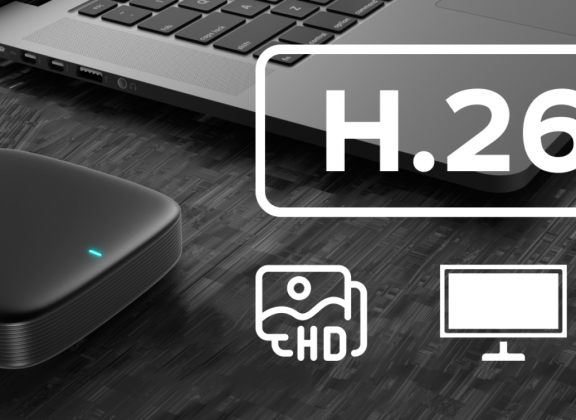Half a decade ago nearly every IPTV stream relied on H.264/AVC. Today more and more providers are embracing H.265, or HEVC—High Efficiency Video Coding. Marketing blurbs now tout “HEVC hardware decoding,” “4 K HDR @ 60 fps,” and sales staff claim an older unit will soon “show nothing at all.” Below we examine why the industry is moving to H.265, the principal H.265 codec advantages for viewers, and whether it is truly time to upgrade IPTV box hardware.
H.265 vs. H.264: Core Differences
The primary aim of HEVC is greater compression. On average it delivers 30–50 percent video compression savings relative to AVC. A Full-HD channel needing 8 Mbps in H.264 can look identical at roughly 4–5 Mbps in H.265. Operators cut bandwidth costs and can squeeze more HD services into a single multiplex, while customers enjoy smoother playback on the same internet plan and less buffering—clear wins in the HEVC vs AVC debate.
A second edge is built-in support for native 4 K and HDR. Designed for resolutions up to 8 K and 10-bit colour, HEVC is the codec of choice for UHD sport, blockbuster films, and nature docs—so the argument H.265 vs H.264 usually ends in favour of the newer standard.
Does Your Current Box Already Handle HEVC?
Before heading to the store, check what you own. In Android TV open Settings → About, or in MAG/Dune/Ugoos choose System Info. If you see “Hardware decoder: H.265/HEVC,” your unit is already a set-top box with HEVC and replacement is optional.
Beware of software decoding. Apps such as VLC or Kodi can play HEVC on dated silicon, but heavy CPU load leads to dropped frames or heat in 4 K. A true hardware block processes the stream without bogging down the processor. Even entry-level chips like the Amlogic S905X4 render 4 K@60 fps HDR smoothly, while premium SoCs—Amlogic S922X or Nvidia Shield TV—add Dolby Vision, standing tall among H.265 compatible devices.
Internet Speed Still Matters
If your household plan tops out at 20 Mbps, a switch to HEVC effectively doubles capacity: two concurrent Full-HD televisions or a single 4 K channel free of pauses. On a 100 Mbps line the benefit is smaller, yet reduced data use is critical when you rely on mobile broadband.
Clear Signs an Upgrade Is Needed
- The provider migrates most channels to HEVC and some no longer play—your box lacks IPTV H.265 support.
- 4 K streams jitter, audio outraces video—software decode is active.
- The chassis surpasses 60 °C even on HD footage—CPU is overstressed.
- New HDR 10/HLG services appear but your device outputs only SDR—the SoC cannot transmit extended range.
Checklist for Purchasing a New HEVC Set-Top
- Chipset: Look for Amlogic S905X4, S905Y4, S922X; Realtek RTD 1619; Broadcom BCM72180; Nvidia Tegra X1+, any of which powers a modern HEVC set-top box.
- HDMI 2.0b or newer for 4 K@60 fps, 10-bit colour, HDR10/HLG.
- Built-in Wi-Fi 5 or Wi-Fi 6 to stream UHD wirelessly without lag.
- Gigabit LAN for those who favour cables.
- Android TV 10/11 or an actively updated vendor firmware.
Verdict: Upgrade or Wait?
Replace your hardware if
- your provider is aggressively converting feeds to HEVC
- you intend to watch HDR and 4 K UHD channels
- current playback stutters or overheats the device
Industry analysts expect H.265 to dominate within two to three years, phasing out AVC just as AVC eclipsed MPEG-2. When buying a new display or receiver, confirm that “HEVC hardware decode” and “HDR 10” appear on the spec sheet—future-proofing for better streaming performance, greater image quality improvement, and smart bandwidth saving.
